Are you looking for a better, healthier alternative to smoking cannabis? Have you heard of dry herb vaporizing before? Learn more about the benefits of using a dry herb vaporizer, how it is different than vaping oil, and discover the different product types available so you can get started today.
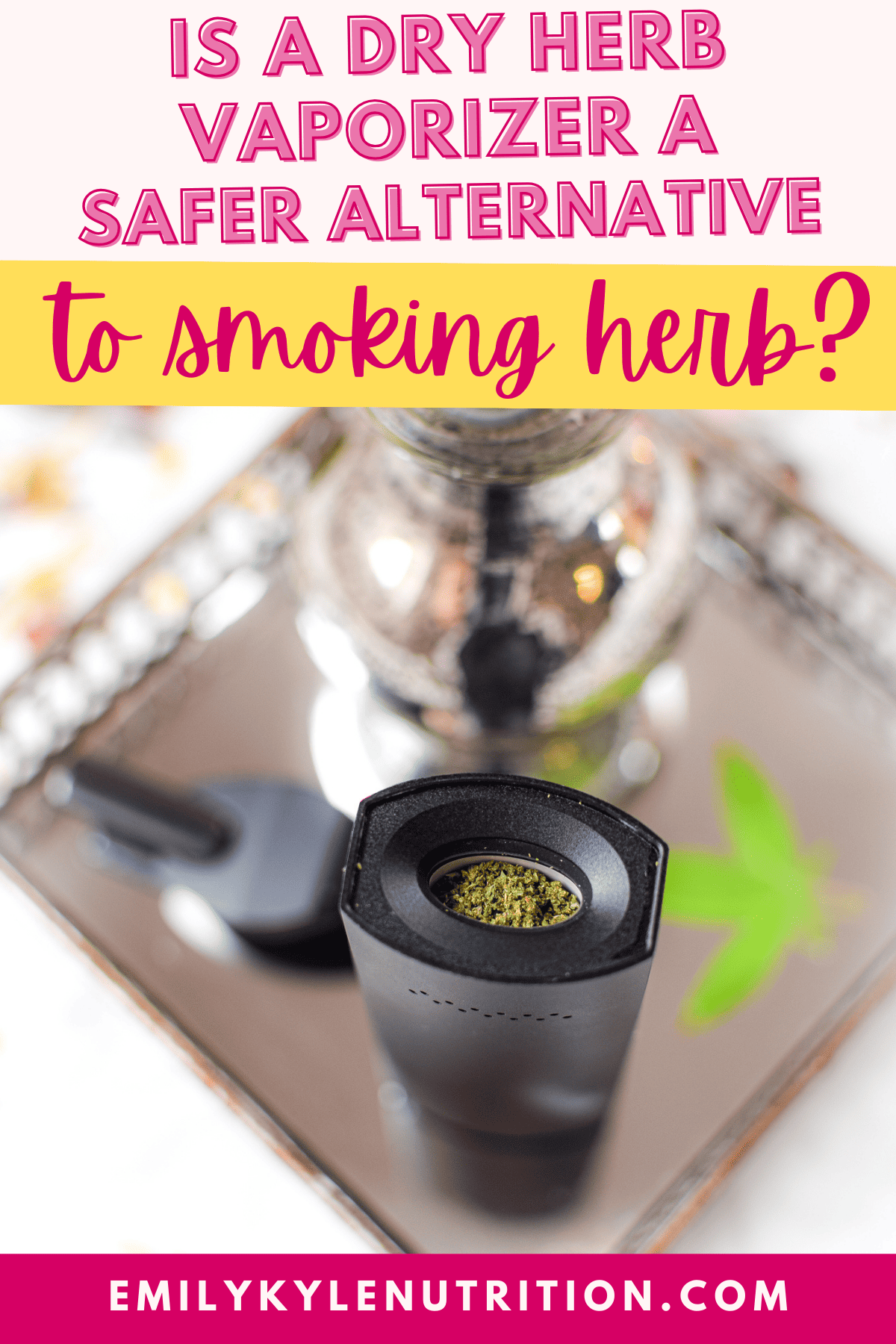
Table of Contents
Article Features
- An overview of what a dry herb vaporizer is
- The benefits of vaping vs. smoking
- Want to make it easy? Shop my best-selling products so you can start your journey today – now shipping across the United States!
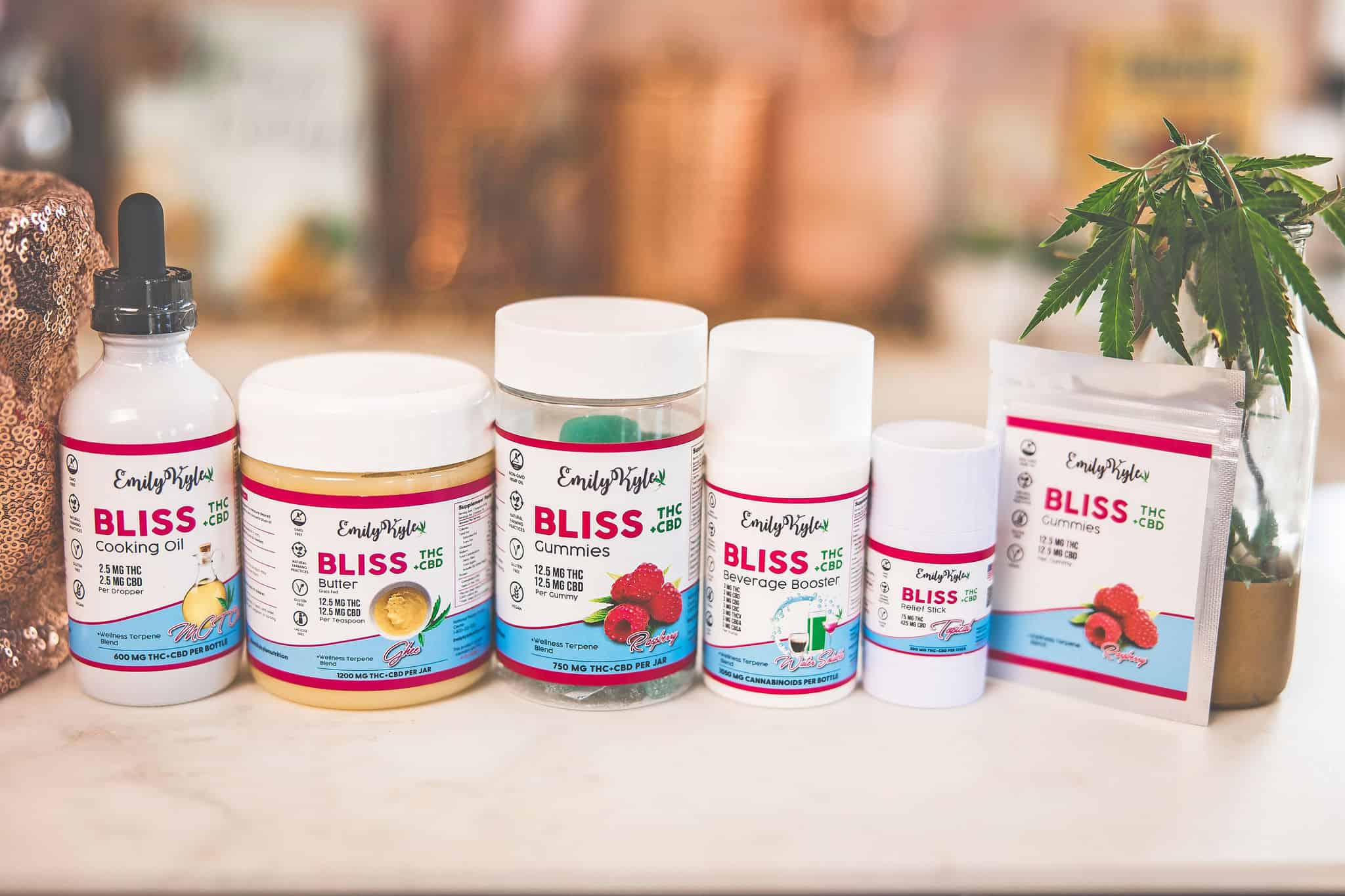
Why You Will Love This Guide
For so long, it seemed like smoking was the only way to consume cannabis.
We now know that there are many ways to use cannabis, from topicals to edibles, that extend beyond just smoking.
However, members of my Edibles with Emily community still want the quick effects associated with smoking, without the health risks.
That’s where a tool called a dry herb vaporizer comes in.
In this guide, we will review what a dry herb vaporizer is, explore the benefits, and discuss different models available to purchase.
What is a Dry Herb Vaporizer?
A dry herb vaporizer is a small, typically battery-operated device.
This device is used to heat, decarboxylate, and vaporize the THC, CBD, or CBG found in cannabis to be inhaled by the user.
The best way to describe this in inhalation method is “smoking cannabis, without the smoke“.
So many people are falling in love with this methodbecause it can quickly deliver cannabinoids to the bloodstream, without many of the unwanted side effects associated with smoking.
Now, keep in mind that using a dry herb vaporizer is much different than vaping cannabis oil.
Dry herb vaporizers use raw or dried cannabis plant matter, typically flower, just like smoking does.
However, instead of using a lighter to heat and torch the plant material, this device heats up the plant material until the terpenes and cannabinoids are released in gas form.
Benefits of Dry Herb Vaporizers
Dry herb vaporizers offer many benefits, both health and preference-based.
The general preference advantages of vaping include portability, concealability, and efficiency1.
The general health advantages of vaping include a lack of combustion and smoke, which can produce carcinogens2.
We will explore the preference and health benefits in more detail below.

Personal Preferences
Using a dry herb vaporizer is more discrete than smoking, due to its lack of smoke and reduced smell.
This makes dry herb vaporizing a convenient option for many people, especially in public or on the go.
Using a vaporizer also allows you to control the heat settings and adjust the amount you are inhaling, giving you the ability to micro-dose easily.
This is perfect if you are new to cannabis and unsure of how it will make you feel.
A dry herb vaporizer will allow you to ease into the experience of inhaling cannabis.
You can also control whether you want to enjoy a THC-dominant or CBD-dominant cannabis to enjoy, based on your personal preferences.
Last but not least, connoisseurs prefer dry herb vaporizers because they feel it gives cannabis a cleaner, more appealing taste by preserving many of the terpenes.
Harm Reduction
Smoke, regardless of its source, can be filled with carcinogens that are detrimental to your health 3.
While smoking a joint, pipe, or bong may be comfortable and enjoyable, combustion and inhalation are undesirable from a health standpoint.
Despite the health risks, many people still want the experience of smoking because of the quick onset of effects, typically 1-3 minutes.
While not without risk, vaporizers can serve as a lower-risk alternative to smoking.
As published in the Canadian Journal of Public Health, compared to smoking “cannabis vaporizer use can reduce the emission of carbon monoxide, chronic respiratory symptoms, and exposure to several toxins” 4.
A pilot study published in Clinical Pharmacology & Therapeutics found that “vaporization of cannabis is a safe and effective mode of delivery of THC” 5.
In addition to reducing your exposure to toxic chemicals, vaporizers reduce the likelihood of throat, lung, and mouth irritation from excessively high heat associated with smoking.
While more long-term clinical trials are needed, the Canadian Journal of Respiratory Therapy concludes that “vaporization of cannabis is likely less harmful than smoking” 5.
Disadvantages
Of course, dry herb vaping does not come without its own share of drawbacks. Disadvantages of using a dry herb vaporizer include:
- Symptoms of coughing, wheezing, and tightness in the chest
- Claimed weaker medication delivery
- High device cost
- Technology-use barriers for some individuals
How to Shop For Dry Herb Vaporizer
One of the major drawbacks of using a dry herb vaporizer is the expense. Top of the line vaporizers can cost several hundreds of dollars or more.
However, if you are a frequent cannabis consumer invested in your health and wellness, a high-quality vaporizer may be a worthwhile investment.
Purchasing a dry herb vaporizer is a personal experience that will take into account your preferences in style and use along with the budget.
Just be sure you are specifically purchasing a dry herb vaporizer as opposed to other vaporizers that use liquid and concentrated oils and extracts to vaporize.
Heating Method
There are two main heating methods a dry herb vaporizer can use: conduction and convection.
Conduction vaporizers heat the plant material directly through a heating chamber.
While conduction vaporizers may be a lower cost they also use up plant materials much quicker and may affect the taste of the plant.
Convection vaporizers heat your dried plant material through heat and steam.
They can prolong the life of your plant materials and are considered the premier vaporizers with regard to taste. Keep in mind convection vaporizers are often more expensive initially.
Vaporizer Design
An important part of the vaporizer is the mouthpiece used for inhaling the plant.
These mouthpieces come in a variety of sizes and different materials for your comfort and preferences. The devices are compact and come in a variety of styles.
The vaporizers are quick and simple to use oftentimes only requiring the touch of one button.
Most options are rechargeable for your convenience rather than requiring it to remain plugged in for use.
Convenience
Consider your needs and habits when deciding which option will be best fitted for your needs.
There are portable options for vaporizers which are rechargeable and small and desktop options which are larger in size and will require the vaporizer to be plugged in for use.
And don’t forget, you can use your leftover plant material, “already vaped bud” to make edibles!
Popular Dry Herb Vaporizers
With so many dry herb vaporizers on the market today, I understand how overwhelming it can feel to pick a product that is right for you.
Here are a few of the most popular options often shared inside my Well With Cannabis Community.
DynaVap
This is the product I personally use and love in my everyday life.
DynaVap proudly designs, engineers, and manufactures all of their battery-free vaporizers in-house using the highest quality materials available.
DynaVap Thermal Extraction Devices are built to maximize performance without compromising design.
PAX Vaporizers
Many consumers love the PAX devices because the PAX 3 works with not only flower, but also works with waxy and solid concentrates.
Get everything you need for flowers with the Basic Kit, or save by choosing a complete kit, which comes with the concentrate insert.
Other Mentions
Member of my Facebook group have also shared their love for:
- Arizer
- Volcano or Mighty+ from Storz & Bickel
- DaVinci
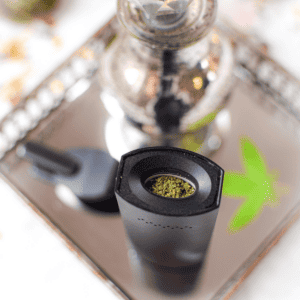
How to Use a Dry Herb Vaporizer
Equipment
- Dry Herb Vaporizer
What You Need
- 1/4 ounce ground cannabis flowers
Instructions
- Note, all vaporizers are different. You should familiarize yourself with your specific dry herb vaporizer by taking a look at its manual. Get to know each part of the vaporizer before proceeding.
- Next, you will need to ensure your dry herb vaporizer is charged and ready for use.
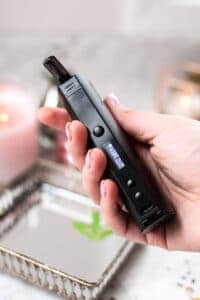
- Then, you will load the herb chamber making sure to follow the guidelines within the manual and not overpacking the chamber.
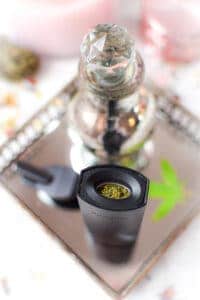
- Next, you will set the temperature for the vaporizer. It is recommended that beginners begin at a lower temperature before increasing incrementally if needed.

- Begin inhaling the vapors. Do so slowly especially if this is your first vaporizer experience.
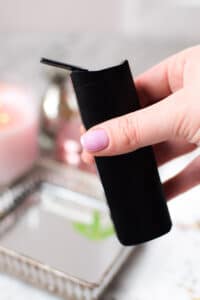
Notes
Frequently Asked Questions
Yes, this method involves vaporizing dried cannabis flowers. Vaping cannabis oil involves vaping the already prepared oil product.

Unlock the Secrets of CBD in Just 5-Days…
Dive deep into how CBD and THC can enhance your wellness journey with my immersive 5-day “CBD, THC & Me” workshop. Get expert insights, personalized guidance, and practical advice to help you harness the potential of the plant.
More Articles You Will Love
CBD Guides & Recipes
How to Smoke or Vape CBD Flower
Articles & How-To Guides
Vaping Cannabis Oil: Exploring The Pros & Cons
Cannabis Infusions & Extractions
How to Make AVB Edibles with Already Vaped Bud
Articles & How-To Guides

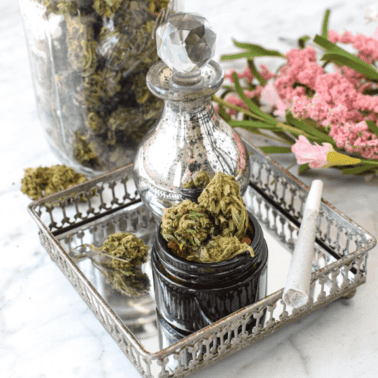

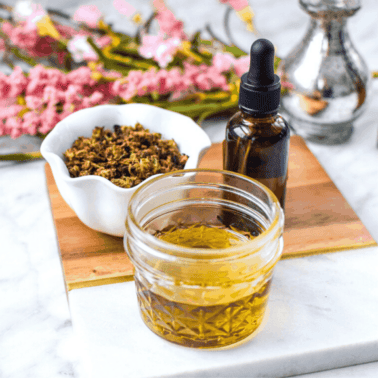
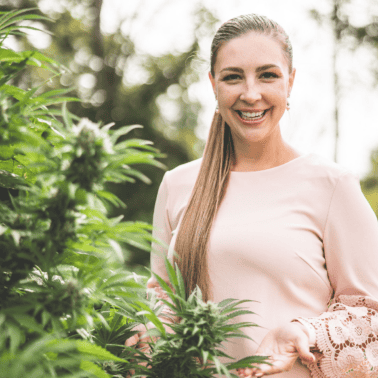









Hi and I am so interested in the dry herb vaporizer. This is incredible for me because I only love flower but man is it harsh on my throat. I also get a lot of sinus problems from smoking I’ve come to find out. How much is this product?
Hi Sebastion. I’m so glad to hear you’re interested in a dry herb vaporizer — it’s such a great option, especially if smoking has been causing discomfort for your throat and sinuses. For pricing and details, I’d recommend checking product links in the article or contacting the manufacturer directly for the most accurate information. I hope this helps, and happy vaporizing!
Outstanding Emily. Your articles continue to improve. I have used cannabis for 4 years. The first 2.5 years I floundered. But as I read more things started to fit. I think its been 6 months since I found the site and learned about CBN and CBG. I have had to buy High Dosage products and have found Neurogen who makes High Concentration CBN. It also seems high potency full spectrum CBD is helping with my chronic pain that I have endured for over 30 years. It seems that all suppliers should for a union and donate X amount for cannabis research by Harvard Medical School. Big Pharma has suppressed these studies and too many docs believe all their crap. That union should also develop standards. Most of the cbd sold on tv, grocery stores, etc., is crud.
Thank you for sharing your journey! It’s great to hear how CBN, CBG, and high-potency products are helping with your chronic pain. I totally agree — more research and industry standards would make a huge difference!
I have a question about vaporizing and would be interested in your thoughts. Say you have some high THC bud that is actually almost entirely THCA before any heating. You put it in your convection vaporizer and hit the button and the bud is heated. Now, heating is not instantly at the setpoint – the bud warms as the heated air flows around it. It will first reach the boiling point of THCA, given as 104C; at the boiling point vapor is rapidly produced and goes into the air stream and it flows out and cools as it exits into you. Common methods require heating THCA to 110C for 45 to 90min to decarboxylate this THCA, but it should be gone, not hanging around to decarb, right? So when the temperature finally gets to the THC boiling point to vaporize any THC, there wouldn’t be much THC hanging around.
A lot of vapor is produced below the boiling point. That is why we smell lavender and pinene-rich aromas when we open a jar at room temperature. The terpenes are evaporating, just not at a rapid rate; but in the case of these familiar scents, only minute quantities are required to be detected by our noses, but it demonstrates that vaporization does not require being at the boiling point. At the boiling point the substance vapor pressure is equal to the atmospheric pressure and it rapidly goes into the gas phase. So, returning to my question, vapor of the THCA will be emitted as the temperature ramps up, and much should be produced when the boiling point is reached, and all of this happens in seconds as compared to the long times needed to decarb. I know, decarb is not something that only happens at minute 90, it is progressive and slowly happens even at room temperature. But this vaporizing process is rapid and the “A” boiling points are lower.
Any thoughts on this? Is this why some people say the experience is less than smoking (combustion). Has anyone analyzed the vapors from a dry herb vaporizer? I am very big on CBDa and make tinctures with alcohol to keep the temperature down. The CBDA process is the same as for THCA, just a little higher temperatures required. I’m just wondering if a significant amount of CBDA is emitted in a dry herb vaporizer.
Thanks.
Hi there Dale,
Your query is quite insightful, and it’s evident you’ve done your homework on the complexities of vaporizing THCA and CBDA! 🎓
You’re correct in saying that decarboxylation is a progressive process and doesn’t just happen at one point. When using a vaporizer, the THCA and CBDA do indeed start to vaporize before they have fully decarboxylated into THC and CBD. This might result in a different experience compared to smoking, as the cannabinoids might not be fully activated.
As for whether a significant amount of CBDA is emitted in a dry herb vaporizer, it’s possible, but without lab tests, it’s hard to say for sure. As you’ve mentioned, some people report a different experience with vaporizing versus combustion, which could be a result of these differences in cannabinoid activation.
Ultimately, the best way to know for sure would be through scientific analysis of the vapors. It’s a fascinating area of study and one that I hope we’ll see more research on in the future.
Remember, everyone’s experience can vary greatly, so it’s all about finding what works best for you. Thanks for such a thought-provoking question!
Best, Emily